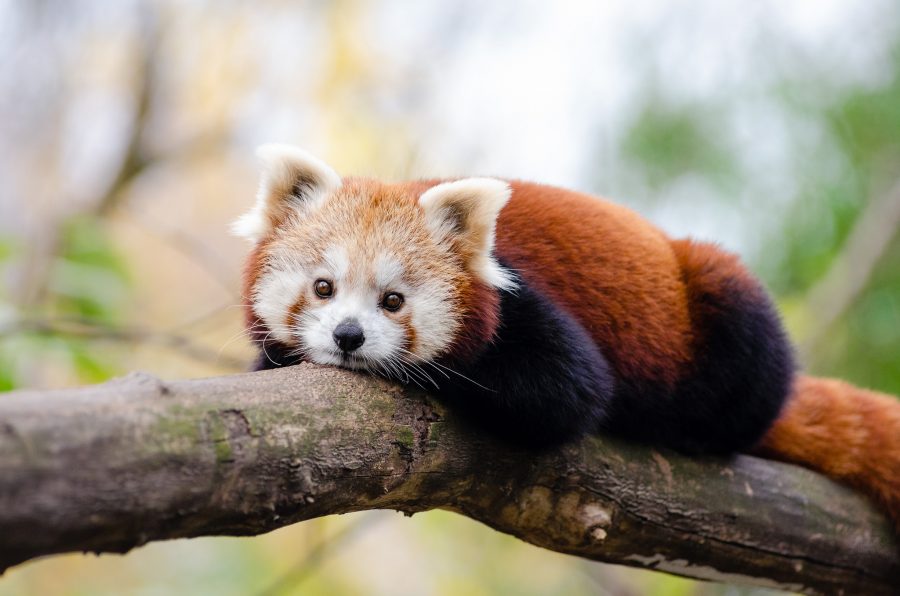Earth’s conflict with Endangered Species
We have all seen them at the zoo: gorillas, rhinos, tigers, elephants, and more. But outside the comfort of these safe habitats in the zoo, there is a real problem surrounding endangered species that are declining in large numbers due to causes like climate change, hunting, poaching, deforestation, and simple Darwinism.
Now, it is true that if there is a species of elephant that is endangered in Africa, there is little we can do as high school students in Vernon Hills. Yet, these problems genuinely do impact people all over the world and are decreasing the overall biodiversity that the Earth is privileged to have.
Since endangered species are declining mostly because of environmental causes, manmade or otherwise, the species are creating a mutual harmful relationship by taking a toll on the environment in return.
A variety of species are important because when species become endangered, imbalances in the natural chain of ecosystems occur and have enormous impacts on those ecosystems. When a certain species is taken out of a certain environment, the quality of humans’ air and water, fertile soil, food, energy, and transportation are affected.
In 1973, Congress passed the Endangered Species Act to “protect and recover imperiled species and the ecosystems upon which they depend.”
Thus, endangered species and their environments have a mutual relationship. When one suffers, the other one does as well, and humans lose an abundance of resources and biodiversity through that loss.
Biodiversity is important in itself for countless reasons.
According to Ahmed Djoghlaf, the executive secretary of the Convention on Biodiversity, “At least 40 percent of the world’s economy and 80 percent of the needs of the poor are derived from biological resources. In addition, the richer the diversity of life, the greater the opportunity for medical discoveries, economic development, and adaptive responses to such new challenges as climate change.”
Biodiversity does not only give economic benefits and benefits for humans as a society, but it is what makes the Earth a unique world in the sense that it continues to hold diverse wildlife, thrive on it, and hopefully preserve it.
Having a variety of species on the planet is crucial because they perform certain tasks in the environment that humans rely on. For example, an animal as simple as an insect from Asia called the hemlock woolly adelgid works to destroy infested hemlock trees in Asia.
Another example is the rusty patched bumble bee that works to pollinate in agriculture and provide us with crops is on the endangered insects list, according to the U.S Fish and Wildlife service.
“As pollinators, rusty patched bumble bees contribute to our food security and the healthy functioning of our ecosystems. Bumble bees are keystone species in most ecosystems,” said the U.S Fish and Wildlife service.
If these two mere insects are prominent examples of how endangered species create imbalances in our ecosystems, imagine the danger of losing so many more crucial species big and small like the ones in zoos.
By continuing to feed the endangered state of these species, humans are continuing to destruct the health of the earth and the processes they rely on. Going back to the complex chain of species that our world consists of, when an organism goes completely extinct there is an imbalance of the natural food chain. This can hurt the environment by causing an overwhelming population of a certain species, ultimately disturbing humans as well.
What would happen if spiders went extinct and couldn’t catch flies in their webs anymore? Or what if all cats went extinct and couldn’t catch rats? What about the animals that live off the cats, what will they have to adapt to, and who else will that affect then? Our whole world is just one big chain of species that works together to maintain the Earth’s well-being.
So as a students what can you do? First you have to understand that everything you do impacts the environment, from using your microwave to throwing away one too many rolls of paper. But if you really want to try and improve the endangered species situation, try a couple of these methods from the Endangered Species Coalition: next time you are walking by a field of many trees or a place abundant with plants, try to leave all of the plant life alone because chances are, it is in an environment where it plays a crucial role in an animal’s life, which again, is part of a much larger network of animal lives; restrict your use of pesticides and herbicides in your home; and recycle and buy sustainable products because this can help protect forest species and minerals found in different electronics are mined in certain habitats.
Finally, the next time that you are in a forest or a field and you see a simple animal that you may see every day, take time to appreciate it. Somewhere else in the world there are animals being harassed, poached, and hunted and you never know when the opportunity to see a certain species will vanish all together.
“Not only should species be saved for aesthetic and moral reasons, but wild species are also important as providers of products and services essential to human welfare,” said Michael Evans on earthtimes.org.

